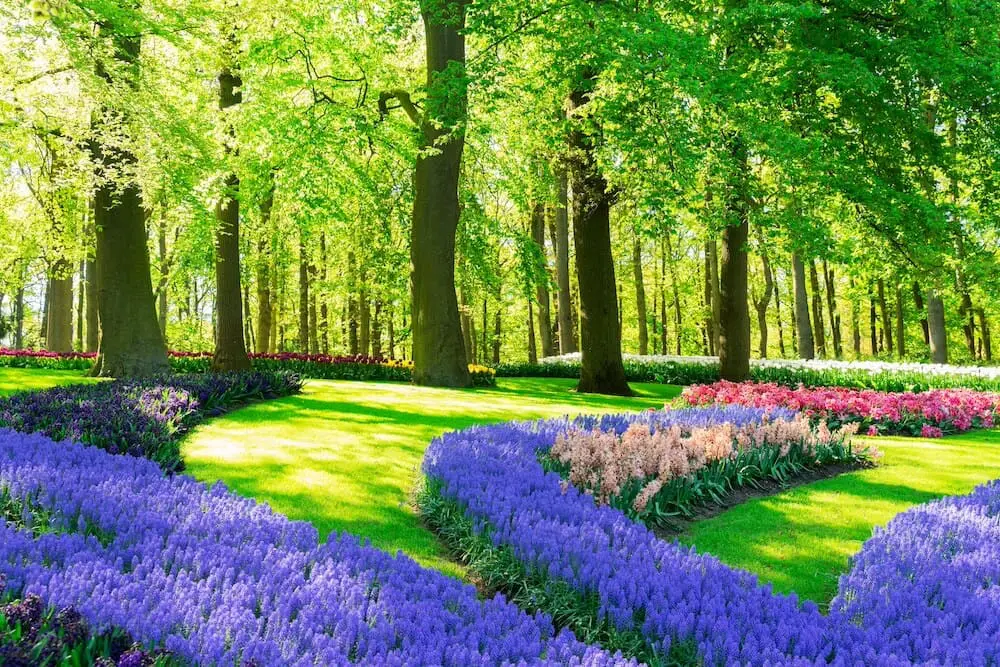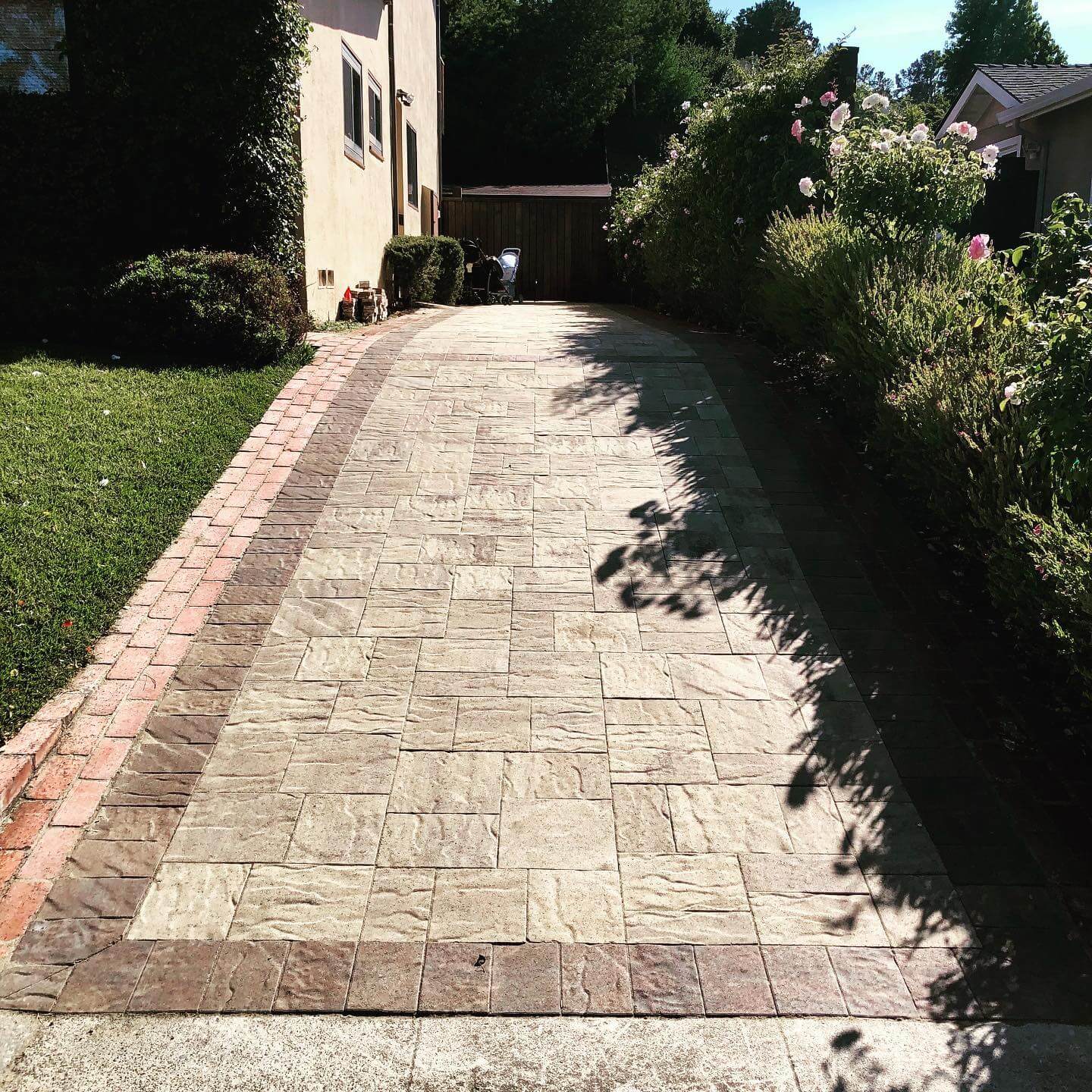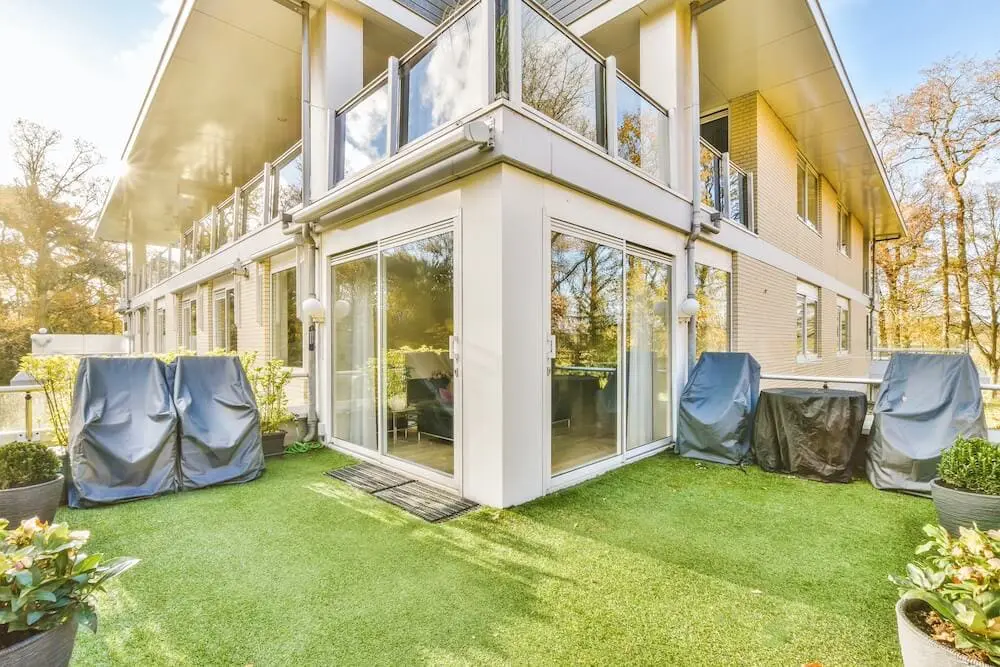
Types of Landscaping: Features & Importance
What is Landscaping?
Landscaping is defined as the act of transforming a plot of land by adding more plants such as trees and shrubs as well as ornamental features to make it more appealing. Landscaping means growing a small portion of the land to improve its feasibility, viability, worth, and aesthetic look. Landscaping involves the art and skill of growing plants to create beauty and delicacy within the landscape area of the property. It involves both the art of designing outdoor space and the space itself. A new house on scum may look apparent and unattractive, but landscaping with plants and shrubs will make a prominent difference.
Planting trees, ground cover, and flowering plants as well as introducing features like paths, walls, fences, and patios are all included in landscaping. This profession is also an art; it acknowledges the natural environment’s existing features and thinks about how to utilize them. Landscaping demands extensive maintenance to ensure that it continues to look good throughout the year. Once an area is landscaped, it is handed over to a gardener or maintenance team who can keep the individual aspects of the landscaping in good shape.
It is mostly done privately in homes or in public places such as parks, walkways, and oriental gardens. There are multiple reasons why landscaping may be carried out, from a desire to create a sustainable terrain that conserves and saves on natural resources such as water to restoring a garden outlook that pleases particular styles and tastes.
Why is Landscaping Important?
Landscaping brings in trees and other plants to create an area of beauty, whether it’s in a quiet neighborhood or a crowded city. Here are a few reasons which highlight the importance of landscape:
1. Landscaping preserves the natural environment
We know the negative impacts of deforestation and shrinking green sectors. Landscaping imparts an opportunity to conserve and secure the natural environment. Growing native flora, avoiding chemicals, and coping with environmental problems keep green places healthy and thriving.
2. Landscaping controls soil pollution
Land pollution is one of the most deadly types of pollution. The zones around factories are polluted by deadly waste, chemical discharge, and emissions. Simply getting rid of all the factories is not a solution. Landscaping can help alleviate some of the issues. Plants purify the contaminated soil. Certain plants like alfalfa and sunflower are so good and called superplants. The technique is known as “phytoremediation.”
3. Landscaping helps filter air
Plants clean both air and soil. Trees are incredibly efficient at this purification. Tree leaves soak up pollutants like smoke, ozone, and nitrogen oxides, filtering and removing them from the air. By adding more landscaping, the city’s atmosphere can be cleaned.
4. Landscaping eases water management
Water may be a feasible resource, but it is not unlimited. Its careful management is necessary. Landscaping is helpful here. By promoting water drainage solutions, landscapers protect natural waterways and create rain gardens. These regions encourage biodiversity, clean stormwater, and control overflows.
5. Landscaping causes a cooling effect
Global warming is a serious issue nowadays. It occurs when the temperature is much warmer than normal. The presence of concrete, cars, and other human activities is responsible for this. To stay cool, people run their air conditioners. Trees are natural air conditioners. They reduce the temperature in the surroundings. On a summer day, a backyard with trees will be 6 C cooler than a yard without trees. Even when you aren’t directly in the shade, the surrounding temperature goes down.
6. Landscaping prevents erosion
Erosion is a deadly issue. Erosion results in increased pollution and sedimentation in rivers and streams. Waterways get blocked, which kills fish and other aquatic species. Erosion also destroys fertile land and results in more flooding. Landscaping, especially grass and shrubs, holds the soil together firmly and tightly with roots.
7. Landscaping plays a great role in sustainability
Good landscapers prioritize the health of the environment. They prefer adopting techniques and revolutions dealing with energy efficiency, clean water, clean air, efficient filtering techniques, and more.
8. Landscaping improves mental health
Being in nature is good for an individual’s mental health. It improves their memory, reduces stress, and boosts happy feelings. Nature is so strong that a small tree or a single plant can boost mental health.
9. Well-preserved landscaping protects homes and buildings
The presence of plants and trees is valuable, but it requires careful balance. The roots of trees and plants can harm the foundation of a house and get into the plumbing. Overgrowth from branches can also cause issues and these are easier to spot instantly. For nature and humans to live in euphony, a healthy balance is necessary.
Types of Landscaping Features
Here are some types of landscaping features. The following is a quick view.
Planting a bed
A monotonous field of lawn can be remodeled into an appealing landscape by the addition of one or more garden beds that add color, texture, and other characteristics to your property. A garden bed takes many forms. You might create a shrub island consisting of flowering shrubs or probably a small ornamental tree as an elegant touch. Or if you want to make a more appealing aesthetic, you can fill a planting bed with very sharp and bright annual flowers. Using a garden bed for vegetables and other edibles is completely acceptable.
Lawn
A lawn is the basic feature of any garden. It enhances garden beauty whether bigger or smaller. In dry climates, placing an irrigation system is essential for growing grass conveniently. Cost is often the key factor, but keep in mind that an irrigation system may save you money because it is more effective than other ways of watering.
Your grass must have sufficient water regularly to remain green and fresh. Overwatering is a problem, an under-watered lawn lacks the strength and flexibility to compete with weeds and diseases.
Shrub
Many shrubs produce impressive autumn flowers, fall foliage, and berries, making a great way to maintain visual aesthetics in your garden even in the winter. Shrubs provide a lot of structure, color, and other characteristics in garden design. Bloomers start yielding flowers in the early summer and keep flourishing until the first sharp frost. Use shrubs as borders and enjoy their beauty and charm as the summer flowers fade. From small borders to tall shrubs, there is a huge array to choose from whether in full sun or part shade.
Flowering trees
Flowering trees offer all-season interest and are among the most rewarding patterns of the yard and often spell the return of warmer weather in northern regions. Timing, color, and style are important features of flowering trees that make them attractive and excel in the aesthetic appeal of your garden. They make excellent accents when planted alone. Any tree set out to help form the backbone of the landscape. With showy spring flowers to vividly colored leaves, they have a wide variety. They are an excellent addition to your yard.
Foundation planting
At the most basic level, foundation plantings are simply beds of plants planted along house foundations. The finest style consists of three parts:
- An entryway planting
- Corner plantings
- Plantings that bridge the gaps between these
Walkways
A stone walkway has a pastoral look that is exemplary for a cottage garden design but is equally ideal for any natural landscape plan. While stone paths sometimes are plotted in mortar, this requires a concrete base and expertise with stone masonry.
A smooth sand set pathway is much simpler and is perfect for manual installation. With this technique, the stones are simply put onto a bed of sand, which keeps the stones fixed and makes it easy to get everything on a level. When you’re done, you can fill the gaps between the stones with sand or gravel or even plants that can tolerate foot traffic.
Fences
A fence is a structure that bounds an area, typically outdoors, and is usually constructed from posts connected by boards, wire, rails, or netting. Fences, widely associated with cottage gardens, bring a cozy feeling to a landscape that few other fences can match.
Diff types of fences used
- Wood fence
- Chain link fence
- Steel or aluminum fence
- Vinyl fence
- Wrought Iron fence
Economic Effects of Landscaping
Common studies show that businesses or enterprises with higher-quality landscapes tend to do better.
Apart from this, there are also more economic benefits as outlined below.
Reduce cost and lower bills
Professional landscaping likely reduces energy costs. Planting specific trees and shrubs can lead to temperature depletion in the surroundings. This would eventually mean less energy expenditure on cooling appliances, especially in areas with correspondingly high temperatures. It leads to reduced energy costs in the long run. This gives businesses with set-up landscapes a possibility to save on finances which can then be channeled elsewhere to increase their income. Homeowners would also benefit from reduced annual energy spending within the home.
Increase damaged land value
Given the aesthetic look landscaping creates, it would be possible to increase the resale value of any piece of land. The best part is people would be more willing to purchase such a piece of land. Therefore, its sale would bring in huge profits if one so chooses to sell it. If the piece of land is properly managed, then its sale would attract a great number of buyers.
Promotes tourism
Landscaping has been seen to play a vital role in attracting foreign visitors annually. Artfully designed settings intermixed into the urban areas create an aesthetic appeal even to natives. Places that experience changing climates would mean that the landscape would be in a continuous state of shift throughout the year, providing aesthetic views and settings for locals and visitors alike. This would therefore lead to an increase in public revenue for years to come.
Learn About Keystone Yard’s Comprehensive Landscaping Services
In the importance of quality of living environment today, having a freewheeling green space today is a dream of modern-day people. Keystone Yards is a leading landscaping company in California that provides the best landscape designs. At Keystone Yards, we provide top-class services for all your landscape needs. As a full-service landscape company, we cover all areas of landscaping including design, installation & maintenance. We are trusted by our thousands of clients. No matter what type of design or service you are looking for, the Keystone Yards experienced and well versed landscaping team takes care of every aspect of Landscaping.





